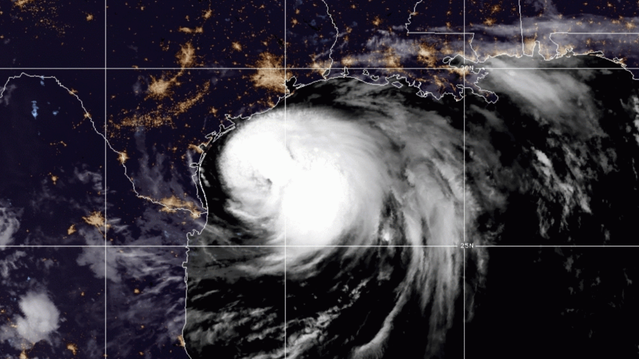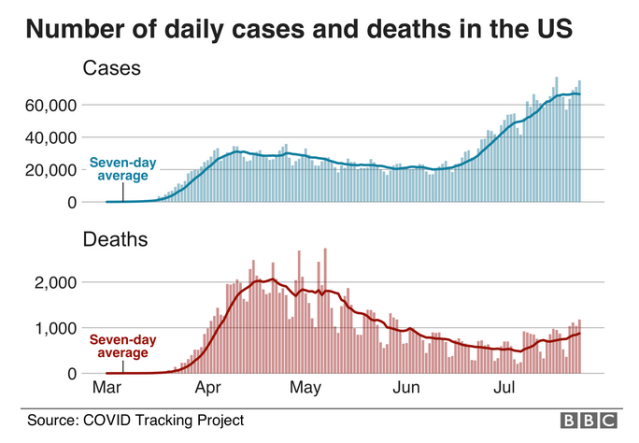
Earthquake 7.8 magnitude – July 21, 2020: An earthquake with a magnitude of 7.8 struck off southern Alaska’s coast on July 21, 2020, shaking the Alaska Peninsula and briefly sparking tsunami concerns before officials said no destructive waves were coming. The earthquake was centered in the Pacific Ocean about 60 miles southeast of Perryville on the sparsely populated Alaska Peninsula, striking around 10:12 p.m. local time (2:12 a.m. Wednesday ET). The Alaska Peninsula protrudes from mainland Alaska and is flanked to the southwest by the Aleutian Islands.
Reports of significant damage, if any, weren’t immediately available. A tsunami warning initially was issued for south Alaska and the Alaska Peninsula, but was canceled by early Wednesday, according to the National Oceanic and Atmospheric Administration. The warning sent people to higher ground in cities like Sand Point, an island community of about 1,000 people off the peninsula, the Anchorage Daily News reported. People in Sand Point gathered at a high school until shortly after midnight, when officials gave an all-clear, Jordan Keeler, an Anchorage-based city administrator, told the newspaper. –CNN

4 simultaneous storms in the Northern hemisphere: TEXAS – Hurricane Hanna made landfall at 5 p.m. Saturday at Padre Island. The storm was moving west at 8 mph and producing up to 90 mph sustained winds. Hurricane Hanna is expected to produce 5 to 10 inches of rain with isolated totals of 15 inches through Sunday evening in South Texas. The western part of the eye of Hurricane Hanna is expected to arrive at 2 p.m., the weather service reported. The National Weather Service issued a hurricane warning and storm surge warning at 4 p.m. Friday for the Coastal Bend area. The warning states dangerous and damaging winds and life-threatening flooding are possible for the region. Both warnings are in effect all-day Saturday. – Caller Times
HAWAII – A hurricane warning has been issued for Oahu as Hurricane Douglas weakens but still heads on a course for the Hawaiian Islands. A warning means hurricane conditions are expected within 36 hours in the area. Hawaii County and Maui County remain under a hurricane watch which means hurricane conditions are possible within 36 hours in the area. As of 11 a.m., the storm was located about 325 miles east of Hilo and about 520 miles east-southeast of Honolulu with maximum sustained winds of 90 mph, which means Douglas is now a Category 1 storm. This is down 15 mph since the 5 a.m. update and significant decrease in strength since Friday when Douglas peaked as a Category 3 major hurricane. Still, Douglas is expected to be at or near hurricane strength as it nears the islands late tonight and tomorrow and weather officials are urging the public to finish making storm preparations today. Douglas was moving toward the west-northwest near 18 mph at 11 a.m., and expected to continue in the same motion over the next couple of days with a slight decrease in forward speed today, forecasters said. –Star Adviser

A worsening global pandemic of COVID-19: The virus, which causes the respiratory infection Covid-19, was first detected in the city of Wuhan, China, in late 2019. It then spread quickly across the globe in the first months of 2020, reaching more than 15 million confirmed cases by the second half of July. Europe and North America saw the first major outbreaks in April but as they began to ease, Latin America and Asia started seeing an increase in cases. North America has seen a resurgence of infections in recent weeks, mostly driven by new outbreaks in the US. Latin America is now the epicenter of the pandemic. Brazil is the worst-hit in the region so far, with more than 85,000 deaths. The U.S. has seen 146,000 dates, as of late July 2020. The University of Washington predicts the death toll could hit more than 220,000 by the beginning of November – though it says this could be reduced to about 180,000 if 95% of Americans wear masks in public. – BBC
Ebola outbreak intensifying in DRC: In the latest World Health Organization Regional Office for Africa situation report on the Ebola Virus Disease (EVD) outbreak in Equateur Province, western Democratic Republic of the Congo (DRC), three more cases, along with two more deaths, have been confirmed, according to an organization tweet. This puts the total cases at 65, 29 deceased, and 21 recovered. In addition, UNICEF reported this week that more than 32 children have lost or have been separated from one or both parents due to Ebola since a new outbreak was declared on 1 June. “As we have seen in previous epidemics, Ebola affects children in a number of ways beyond the immediate risk of infection and death,” said Edouard Beigbeder, UNICEF’s Representative in DRC. “Whether children are infected themselves, or see parents or other family members infected, they require specialized care and support, both physically and psychologically. – ONT

Bunny Ebola spreading fast in US Southwest: A deadly virus is spreading with alarming speed among wild and domestic rabbits in seven southwestern states. The contagion causes an illness called rabbit hemorrhagic disease that has earned the nickname “bunny Ebola” because the disease causes massive internal bleeding and bloody discharge around the nose and mouth. The virus kills swiftly—as happened in February, when pet rabbits boarding at a veterinary practice in Manhattan suddenly began to die without warning, The New Yorker reported last month.
The disease is deeply worrying for domestic rabbit owners and could also have consequences for wild rabbit, hare, and pika populations. An outbreak last year in northwestern Washington state had devastating impacts on both feral and pet rabbits. Now animal health officials are tracking its spread and trying to protect their most endangered rabbits from a disease that is very contagious and has a high mortality rate. “They both represent a longtime fear that has come true,” says Susan Kerr, an education and outreach specialist at the Washington State Department of Agriculture. Public health officials have worried about a pandemic, while rabbit owners have watched the virus spread across Europe for years. “Rabbit enthusiasts have always been terrified of this disease.”
Rabbit hemorrhagic disease was first recognized in China in 1984. It’s caused by several pathogens that belong to a family called caliciviruses, which are unrelated to the ones that cause Ebola. In 2010, a new version of the disease arose in France that spread among domestic and wild rabbits and eventually traveled as far as Australia. Known as rabbit hemorrhagic disease virus 2 (RHDV2), it can kill infected rabbits within a few days by causing widespread inflammation, problems with blood clotting and bleeding, and organ failure. “The organs can’t do their functions anymore because there is so much blood in them,” Kerr says. –Popular Science

Comments
Post a Comment